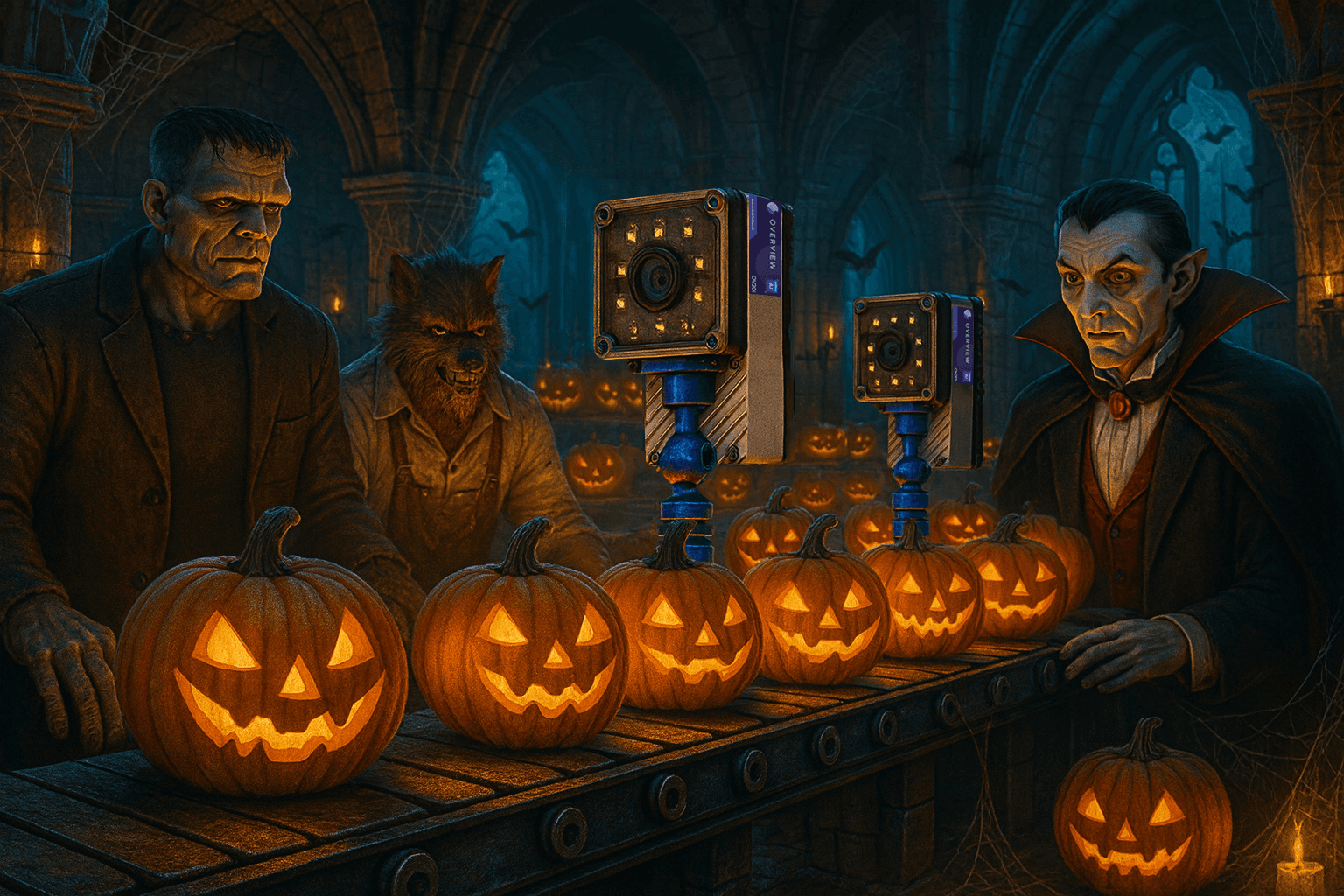Ghost Defects in Battery Welds: How Edge AI Makes the Invisible Visible
Reliably detect micron-scale weld misalignments on reflective battery caps, catching the critical ‘ghost defects’ that traditional vision systems miss.

TL;DR (Quick Answer)
Micron-scale misalignment in battery welds is the ultimate “ghost defect”—barely visible and highly consequential. Using the OV80i Vision System, an edge-first vision stack with on-camera NVIDIA GPU separates signal from glare to reliably catch small offsets at high speed.
The Challenge: Why Ghost Defects Keep Escaping
In battery manufacturing, the placement of the tab weld on the cell cap is critical for performance and safety. A deviation of just a few microns can compromise the connection, leading to downstream failures. These "ghost defects" are notoriously difficult for automated systems to catch.
- Specular Surfaces: The shiny, curved metal of the battery cap creates highlight rings and flares that look like "good geometry" to traditional rule-based vision, masking the true weld location.
- Sub-pixel Offsets: A weld can be misaligned by a tiny amount relative to the cell center. This may pass basic dimensional checks but is enough to cause a functional failure.
- Microscope Bottlenecks: Relying on human inspectors with microscopes is slow, subjective, and introduces inconsistency, making it impossible to scale for 100% inspection.
Solution: An Edge-First Pipeline for Geometric Truth
To catch ghost defects, you must first make them visible. The entire vision pipeline should be focused on one goal: precisely measuring the vector from the cap center to the weld center. With the OV80i, we deploy a complete edge-first pipeline to accomplish this with low latency and high reliability.
1. Capture & Alignment
Using a 12 mm lens and an on-axis ring light, the system suppresses shadows and emphasizes the circular features of the cap. The first step in the software is to detect stable edges on the cap face and normalize the image's rotation, ensuring the measurement is consistent frame-to-frame.
2. On-Camera AI Segmentation
A PyTorch segmentation model runs directly on the OV80i's integrated NVIDIA GPU. It generates pixel-level masks for the two critical regions of interest: the outer circle of the cap and the weld region. This AI-driven approach isolates the features from visual noise like glare.
3. Measurement & Decision
Once the centers of the cap and weld are identified by the model, the system computes the center-to-center distance in pixels and applies a calibrated pixel-to-millimeter conversion. In Node-RED, this distance is compared to a set tolerance. A clean pass/fail bit is sent to the PLC, and the numeric offset is published for process control and trend charting.
This mirrors the approach in our [battery weld case study]: segmentation to extract geometry, then simple math for a robust pass/fail.

*Caption: AI segmentation accurately masks the battery cap and weld region, isolating them from glare for precise geometric measurement.*
Key Engineering Takeaways
This approach is successful because it combines modern AI techniques with fundamental machine vision principles.
- 1. Optics First: Controlling specular confusion with on-axis lighting is more effective than trying to fix a bad image with complex software.
- 2. Compute at the Edge: Running deep learning models on the camera's GPU (PyTorch) provides the lowest latency and delivers a deterministic pass/fail signal without network ambiguity.
- 3. Small-Set Training Works: Sample-efficient segmentation allows you to train a robust model by labeling just a handful of good and defective images, enabling rapid deployment.
FAQ
Why are battery weld "ghost defects" so hard to detect?
Ghost defects are hard to detect because specular (shiny) surfaces create glare that confuses rule-based vision, sub-pixel offsets can pass dimensional checks but cause functional failures, and manual microscope inspection is slow and inconsistent.
How does an edge-first AI vision pipeline solve this?
An edge-first pipeline combines specialized on-axis lighting to control glare, an on-camera GPU running a PyTorch segmentation model to precisely identify the cap and weld geometry, and direct PLC communication for a fast, deterministic pass/fail decision right on the production line.
What is the key measurement for weld quality on cylindrical cells?
The key geometric measurement is the vector from the center of the battery cap to the center of the weld. If the magnitude of this vector exceeds a specified tolerance, the tab connection is at risk, indicating a potential failure.
Want a Second Set of Eyes on Your Welds?
Let our edge-first AI vision systems find the ghost defects that threaten your battery quality and performance.